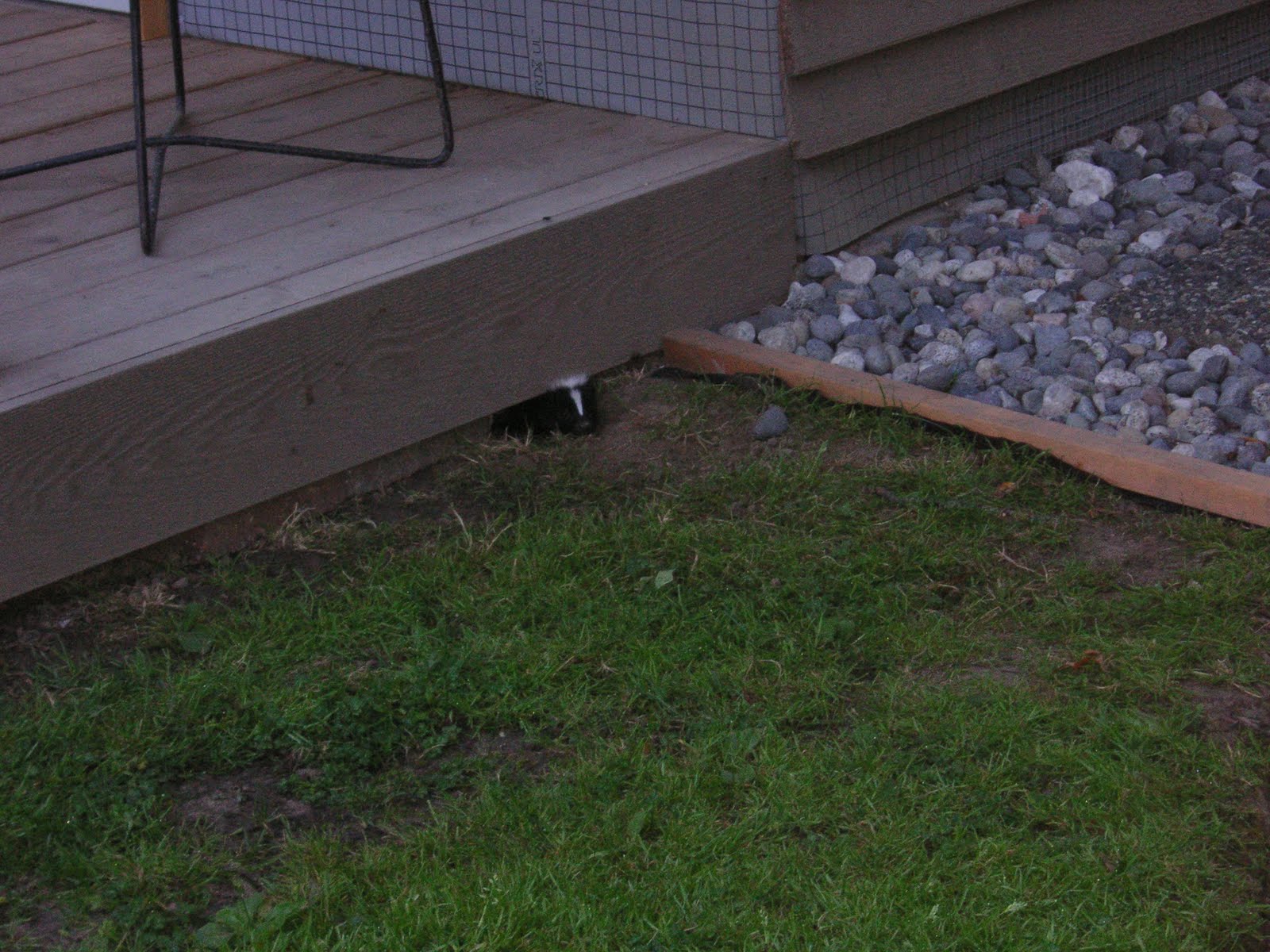If you’re trying to get rid of skunks that are wreaking havoc across your property, there are several different strategies you can try. But, it is very important to put in the time and effort to research and understand your furry enemy before rolling up your sleeves and trying to get the job done. For example, females are slightly smaller than the males and their bodies are covered in thick, black and white patterned fur. Due to their poor eyesight, adult skunks rarely survive longer than 3 years in the wild. Understanding skunks can be done in various ways, but typically includes learning about the following:
- Feeding habits
- Mating behaviour
- Defensive behaviour and predators
- Seasonal behaviour
Feeding Habits
Skunk’s diet can change from one season to another, as they sleep during the day and only go out to forage for food after dark. Their diet can include berries and nuts, leaves, roots, grass, moles, eggs, birds, bees, snakes, frogs, lizards, insects and small rodents. But, don’t be surprised to see them going after pet food and even garbage.
Mating Behaviour
Over the course of its life, a male skunk will mate with several females. The male also separates from the female after mating and their breeding season stretches between February and March. A pregnant female skunk gives birth to a litter of four to eight baby skunks following a gestation period that lasts just over two months. During the first six weeks of their lives, the young completely depend on their mother as they are hairless, deaf and blind. When they reach one year, they separate from their mother and move on to survive independently.
Defensive Behaviour & Predators
Skunks can easily detect the presence of predators like badgers, wolves, foxes, great horned owls and dogs as they are very sensitive to sounds and smells. Skunks prefer to make a quiet getaway from danger if possible. If trapped or chased, they will give off a warning signal by turning and arching their back, raising their tail high, stomping their feet and making a hissing noise. If this doesn’t dissuade the predator, the skunk will spray them with a yellowish, oily fluid from its anal scent glands in self-defense.
Litter of baby skunks rescued from a home.Seasonal Behaviour
You can actively see skunks in the garden before dawn or after dusk in the summer. Unlike many other animals, they do not completely hibernate in the winter. When it’s extremely cold, they can live inside their burrows for continued periods. They are typically solitary creatures and don’t share burrows, with the exception of finding warmth in extreme cold or mating.
Have A Skunk Problem On Your Hands? Get In Touch With Skedaddle
Skedaddle Humane Wildlife Control removal strategy is safe, humane and reliable. If you’re facing an infestation, it is recommended that you leave the hard work to the experts who will assess the situation and provide you with an effective solution. With over 20 years of experience in the industry they will get the job done right and ensure your home is protected from any future infestations. The company has helped more than 200,000 homeowners in that time, making them the ideal choice for your wildlife problems. Get rid of those skunks today by calling Skedaddle and letting the professionals work their magic.




